Generative Visual Manipulation on the Natural Image Manifold
Jun-Yan Zhu, Philipp Krahenbuhl, Eli Shechtman, and Alexei A. Efros
论文阅读报告
2017年6月13日
�
论文简介
论文名称: Generative Visual Manipulation on the Natural Image Manifold
作者列表: Jun-Yan Zhu, Philipp Krahenbuhl, Eli Shechtman, and Alexei A. Efros
出版信息: ECCV 2016
作者首页: https://people.eecs.berkeley.edu/~junyanz/
论文首页: http://people.eecs.berkeley.edu/~junyanz/projects/gvm/
作者简介: Ph.D. student at the Berkeley AI Research Lab, working on
computer vision, graphics and machine learning with Professor
Alexei A. Efros. B.E from Tsinghua University (Zhuowen Tu) and be
a intern at Microsoft Research Asia (Dr. Eric Chang).
论文概括: GAN在图像编辑处理中的应用
�
CONTENT
01
GAN基本概念
02
简介及相关概念
03
论文方法
04
实验效果
02
�
01 GAN基本概念
PART ONE
�
GAN基本概念 · 生成模型与判别模型
p 监督学习目的:对输入进行预测,即 =() 或 (|)
p 判别模型(Discriminative model):
l 直接学习决策函数()
l 或条件概率(|) 作为作为模型
l 学习联合概率分布 (, ) ,再求 (|)=(,)/()
p 生成模型(Generative model):
p 参见:李航《统计学习方法》
p 总结:生成模型的特点是学习联合概率分布(, ) ,而判别模型特点为学习
决策函数。
�
GAN基本概念 · GAN
p 论文名:2014-NIPS-Generative Adversarial Nets
p 作者:Ian J. Goodfellow, Jean Pouget-Abadie , Mehdi Mirza, Bing Xu,
David Warde-Farley, Sherjil Ozairy , Aaron Courville, Yoshua Bengioz
p 作者介绍:Goodfellow obtained his B.S. and M.S. in computer science
from Stanford University and his Ph.D. in machine learning from the
Université de Montréal, under the supervision of Yoshua Bengio and
Aaron Courville. After graduation, Goodfellow joined Google as part of
the Google Brain research team. Later he left Google to join the newly
founded OpenAI institute.[3][4] He returned to Google Research in
March 2017.
�
GAN基本概念 · GAN
p 思想及公式:一种博弈思想的生成模型,生成模型产生图像“欺骗”判别模
型,判别模型判定图像是否为生成的,最终以提高生成的图像质量。适用于
多种模型,包括深度学习模型(MLP,CNN)。
D为常量,G为变量,求最小V
G为常量,D为变量,求最大V
1. G 为生成模型,捕获图像数据分布(高维向量),可微函数如MLP。
2. D 为判别模型,估计图像为真实图像分布 pdata 的概率(标量),可微函数如
MLP。
3. pz 为噪声变量分布,z 为该分布采样(隐向量) ,控制图像的生成。一般由均
匀分布、高斯分布等采样而得。
4. 后面章节的介绍牢记 ∗=() , 即由隐向量产生一张图像。
�
GAN基本概念 · GAN
p 训练算法:
该mini-batch中优化D
该mini-batch中优化G
1. 论文中证明了以上算法优化能够优化GAN最小最大公式。
2. 论文中证明了该算法能收敛至全局最优,给定足够能力的G和D。
�

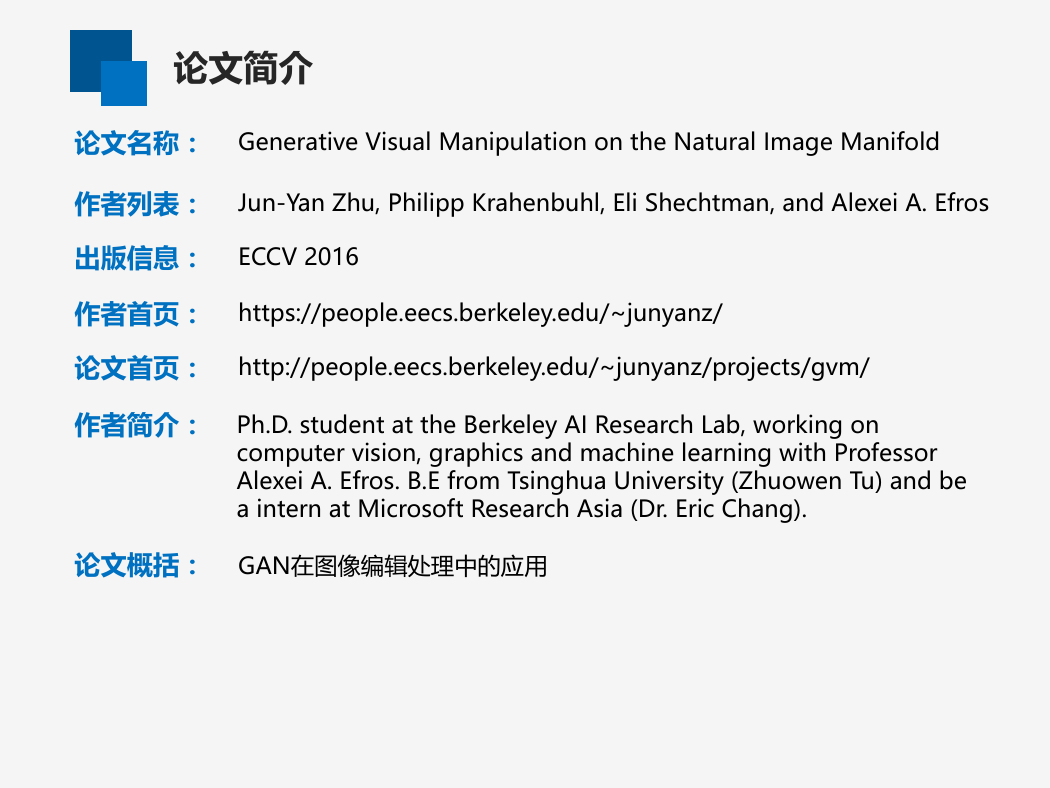
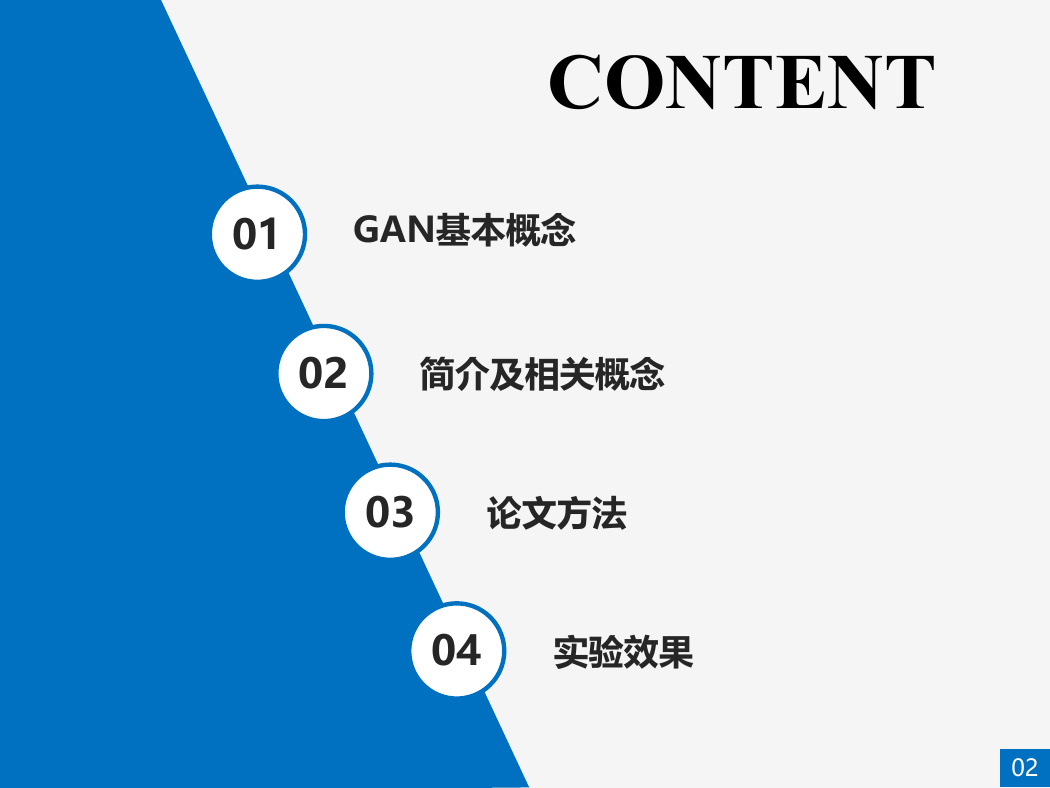
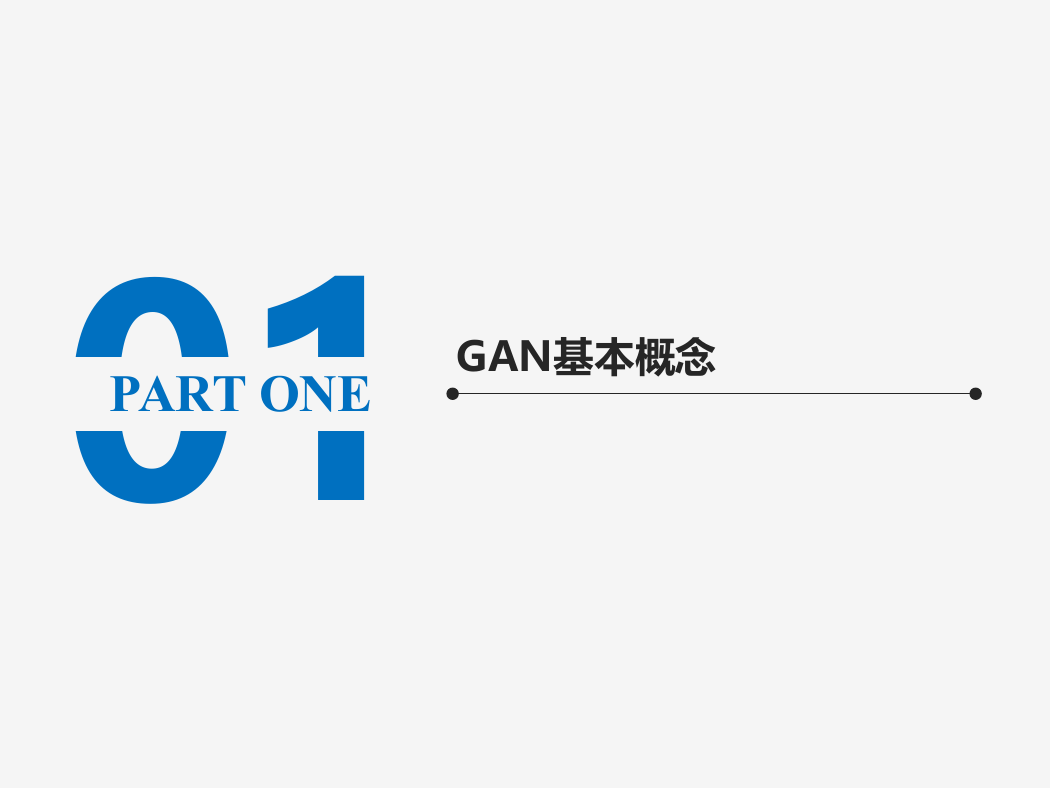
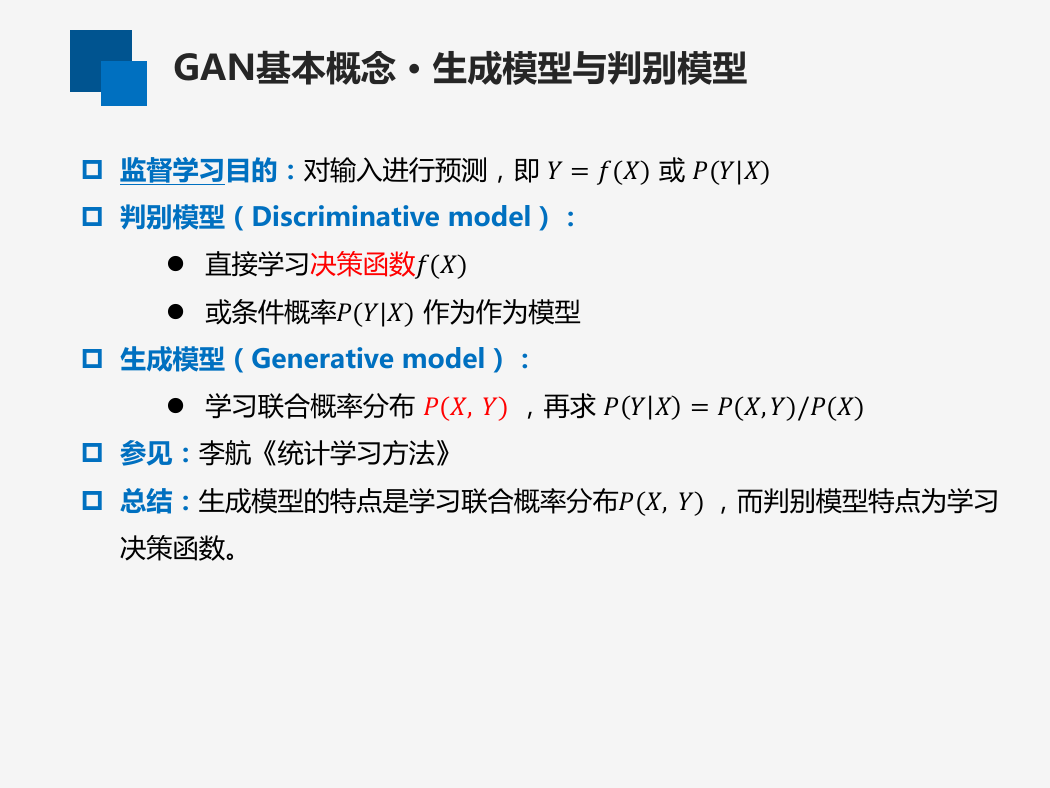
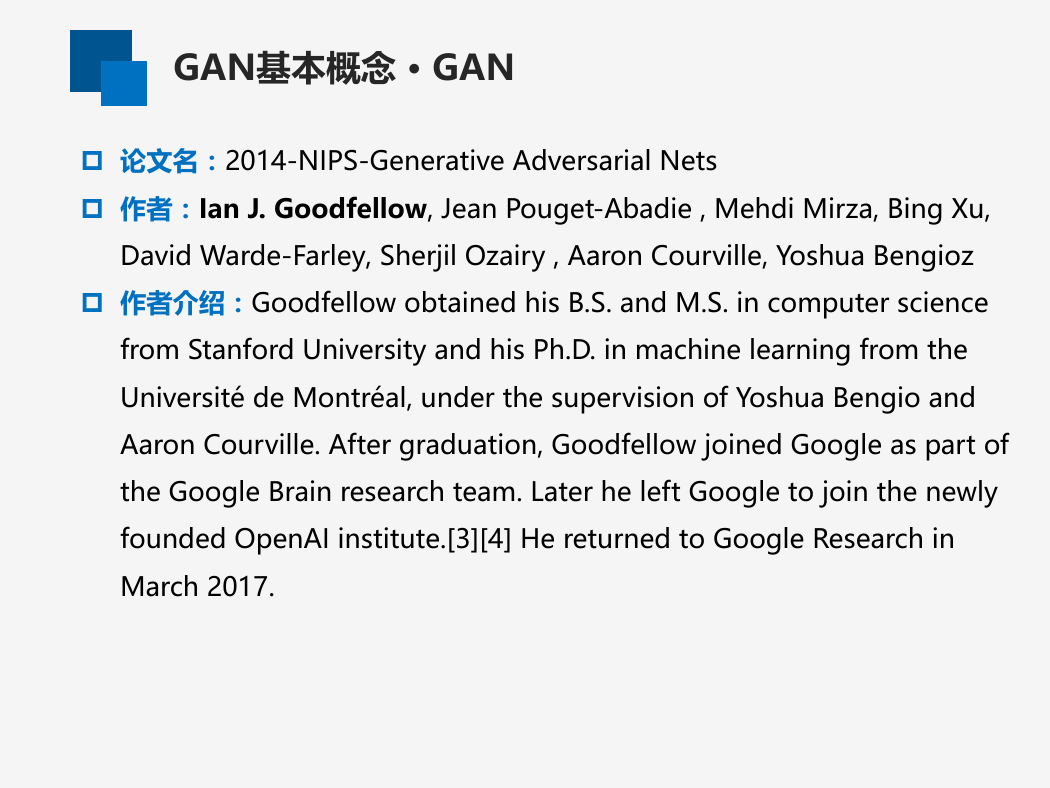
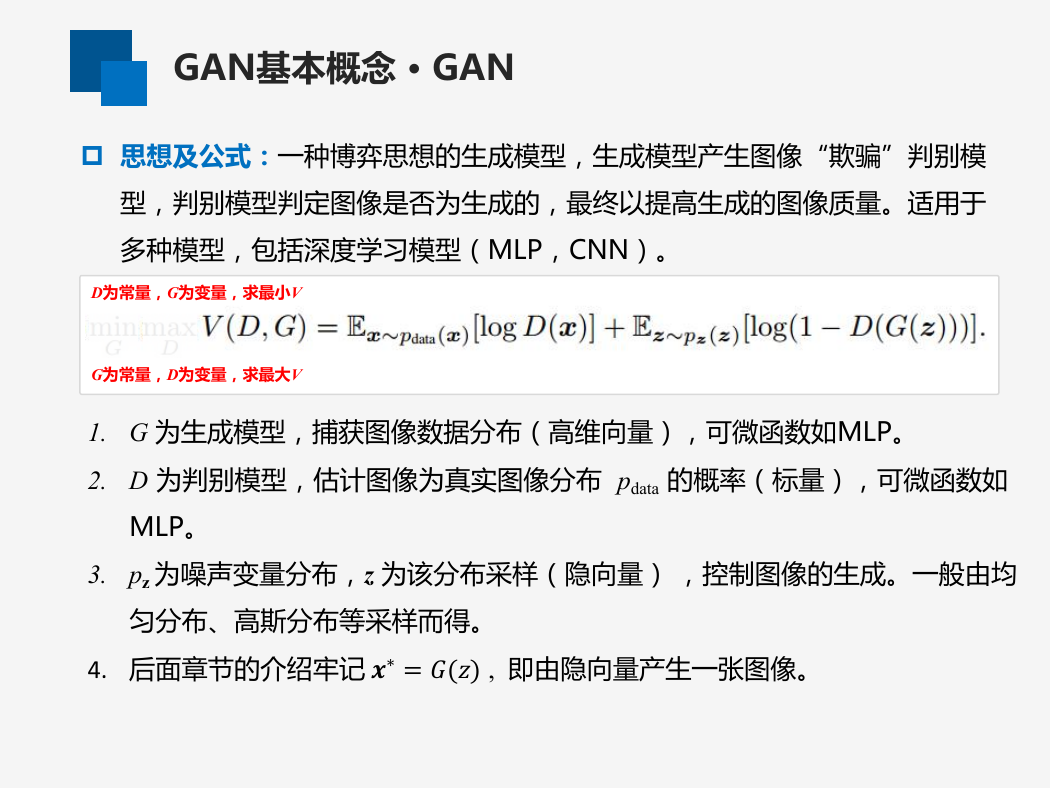
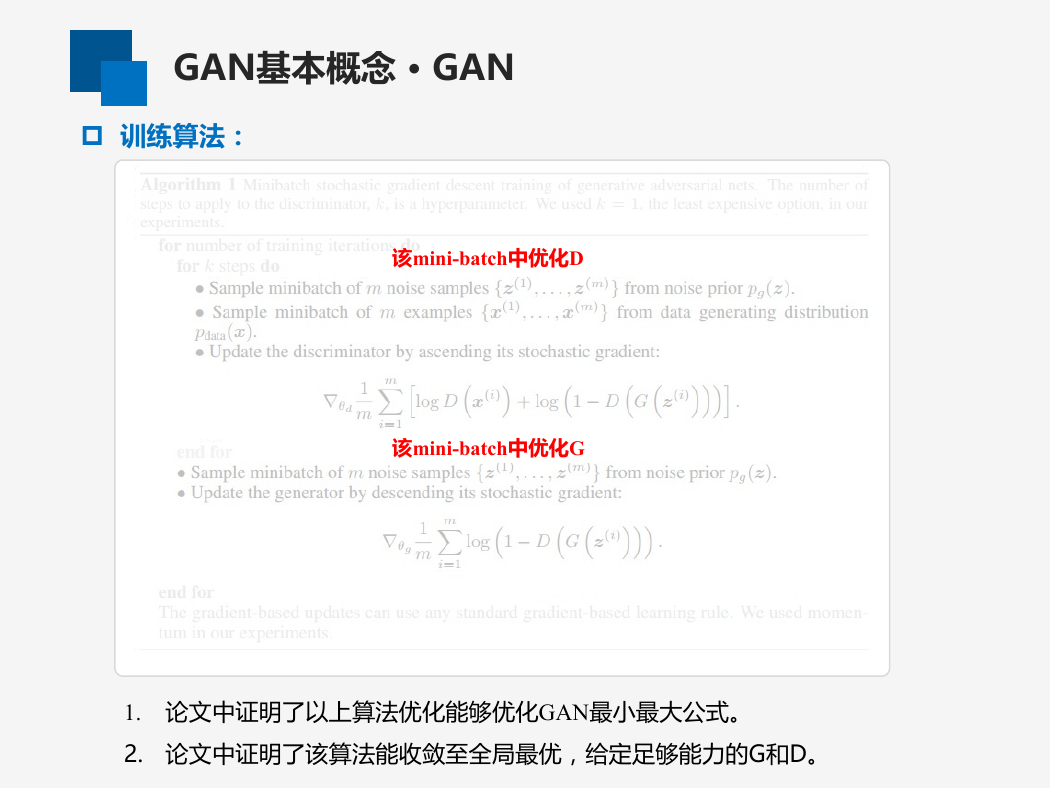








 2023年江西萍乡中考道德与法治真题及答案.doc
2023年江西萍乡中考道德与法治真题及答案.doc 2012年重庆南川中考生物真题及答案.doc
2012年重庆南川中考生物真题及答案.doc 2013年江西师范大学地理学综合及文艺理论基础考研真题.doc
2013年江西师范大学地理学综合及文艺理论基础考研真题.doc 2020年四川甘孜小升初语文真题及答案I卷.doc
2020年四川甘孜小升初语文真题及答案I卷.doc 2020年注册岩土工程师专业基础考试真题及答案.doc
2020年注册岩土工程师专业基础考试真题及答案.doc 2023-2024学年福建省厦门市九年级上学期数学月考试题及答案.doc
2023-2024学年福建省厦门市九年级上学期数学月考试题及答案.doc 2021-2022学年辽宁省沈阳市大东区九年级上学期语文期末试题及答案.doc
2021-2022学年辽宁省沈阳市大东区九年级上学期语文期末试题及答案.doc 2022-2023学年北京东城区初三第一学期物理期末试卷及答案.doc
2022-2023学年北京东城区初三第一学期物理期末试卷及答案.doc 2018上半年江西教师资格初中地理学科知识与教学能力真题及答案.doc
2018上半年江西教师资格初中地理学科知识与教学能力真题及答案.doc 2012年河北国家公务员申论考试真题及答案-省级.doc
2012年河北国家公务员申论考试真题及答案-省级.doc 2020-2021学年江苏省扬州市江都区邵樊片九年级上学期数学第一次质量检测试题及答案.doc
2020-2021学年江苏省扬州市江都区邵樊片九年级上学期数学第一次质量检测试题及答案.doc 2022下半年黑龙江教师资格证中学综合素质真题及答案.doc
2022下半年黑龙江教师资格证中学综合素质真题及答案.doc